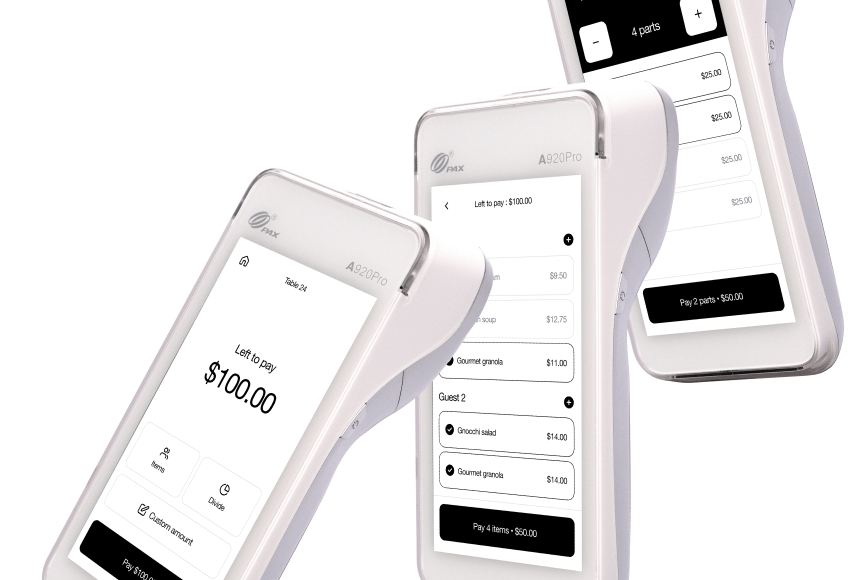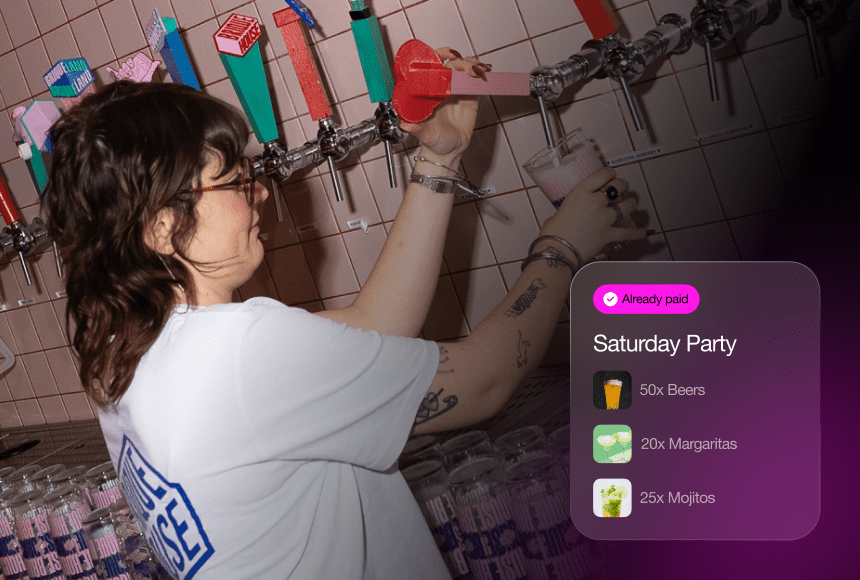
How Outdated Payment Terminals Can Undermine Your Restaurant’s Future
The Hidden Dangers Lurking in Aging Card Machines
Picture a beloved family cookbook handed down through generations. Over time, pages become smudged, instructions get outdated, and ingredients fall out of favor. You might still manage to make a tasty dish, but the experience becomes cumbersome, and you risk falling behind newer, fresher trends. In the same way, old card machines—an essential part of your restaurant’s daily operations—can turn from faithful workhorses into costly liabilities.
By 2025, relying on outdated card machines could be a risk you can’t afford, especially when your competition is already switching to more advanced payment solutions. As an experienced consultant working with restaurant owners across the country, I’ve seen how technology can either drive success or drag a business downhill. In this article, we’ll explore:
- The security holes hidden in older payment devices
- How changing consumer expectations demand fresh systems
- Why modern payment terminals can help you save money—and build trust
- Strategies to update your equipment with minimal disruption
Let’s dive into the specifics.
The Reality Check: Why 2025 Is a Watershed Moment
If you’ve lived through the rapid shifts in the restaurant industry over the past decade—tablets replacing some printed menus, online ordering ballooning during the pandemic, and contactless payments surging—you already know that everything is in flux. Card machines are no exception.
By 2025, experts predict that cash usage in the United States will continue to decline, and nearly all major card issuers will push contactless, chip-enabled, and mobile-friendly payments. In fact, the Federal Reserve’s Survey of Consumer Payment Choice notes a steady rise in contactless card adoption, reflecting a larger trend toward digital, frictionless transactions.
Here’s why 2025 is crucial:
- Compliance Deadlines Pile Up: Payment networks consistently introduce stricter security standards. By 2025, multiple compliance updates will be in full effect. If your terminals don’t meet them, you could face fines or be cut off from certain payment methods.
- Mobile Wallets Become Mainstream: Apple Pay, Google Pay, and other mobile wallets are no longer just “nice to have.” Consumers expect a quick tap or scan that ends the transaction in seconds. If your device can’t handle that, it could cost you sales.
- Cybercriminals Are More Sophisticated: Hackers know older machines often run on outdated software, making them easier targets for data breaches. A single security incident can severely damage your reputation.
- Competition Won’t Wait: The National Restaurant Association’s 2023 State of the Restaurant Industry report highlights how crucial new technologies are for customer retention. If your competitor offers a faster, more secure experience, customers might prefer their spot over yours.
What Exactly Makes an Old Card Machine “Old”?
Restaurant owners often assume that as long as a card machine still runs transactions, it’s doing its job. But the reality is more nuanced. There are several telltale signs that a payment terminal has outlived its prime:
- Outdated Firmware: The software controlling your device might not support newer encryption algorithms or contactless protocols if it’s too old.
- Hardware Limitations: Lack of NFC (Near Field Communication) or mobile payment compatibility is a dead giveaway. If your card reader takes forever to process EMV chip cards, that’s a strong indicator, too.
- Frequent Breakdowns: Repairs cost money, slow down service, and frustrate staff and customers alike.
- Limited Connectivity: Some older terminals might only connect via dial-up or older Wi-Fi protocols, leading to disruptions and slower transaction times.
If you find yourself wrestling with any of these issues, it might be time to move on.
Security: The Costliest Threat Hiding in Plain Sight
Data breaches, phishing scams, and credit card fraud have made headlines in recent years. While these attacks might seem like a big-corporation problem, small and medium-sized restaurants are prime targets too. Often, criminals count on the fact that smaller merchants use outdated systems and can’t react as quickly to emerging threats.
When an old terminal becomes compromised, the consequences aren’t limited to possible fines or refunds. The intangible costs are just as heavy:
- Lack of Trust: Guests share personal data each time they swipe, tap, or dip. Once your system is hit, rebuilding confidence becomes an uphill battle.
- Operational Disruption: Handling a security incident requires time, money, and staff resources that could be better used to enhance your business.
- Reputation Damage: Word spreads quickly, and negative press can hurt foot traffic for months—or even years.
Modern card machines, by contrast, usually come with end-to-end encryption, tokenization, and regular software updates. When security standards evolve, your machine can adapt without forcing you into an entire system overhaul.
Keeping Up with Diners’ Expectations
In the modern dining scene, customers want speed, convenience, and the chance to personalize their experience. Think of how many diners now avoid lines by placing their order via smartphone or skipping the receipt printer for a digital receipt.
Your guests have grown accustomed to scanning a QR code to pay, splitting the bill effortlessly, and even redeeming loyalty points in real time. If your card machine can’t deliver that, your restaurant may feel outdated—much like a menu without any vegetarian or gluten-free options when trends clearly demand them.
Consider these rising expectations:
- Contactless and Mobile-First: Diners want to pay using their phones as easily as they use them for social media.
- Faster Checkout Times: A slow or cumbersome terminal breaks the dining flow and might reduce your table turnover.
- Easy Tipping Options: Digital prompts often encourage higher tips. If your device doesn’t clearly display tipping suggestions, your team may lose out.
- Simplified Splitting: Groups demand a seamless way to divvy up the check. Clunky card machines leave them frustrated, especially when they have to wait for the server to run multiple cards.
Insights into the Real Cost of Sticking with Legacy Systems
You might think holding onto that old machine saves you money—after all, you’re not paying for an upgrade. But the cost of sticking with outdated equipment can far exceed the price of newer terminals in several key ways:
- Slower Transactions: Think about how many transactions you process each day. Sluggish performance can add up to hours of wasted time over months and years.
- More Maintenance: Older devices often require frequent repairs, which can be more expensive than a new terminal.
- Risk of Higher Processing Fees: Some payment providers charge higher rates if your equipment doesn’t meet certain standards. Those extra basis points can be substantial in the long run.
- Opportunity Costs: An outdated POS can’t capture valuable data or integrate with advanced loyalty programs, which means missing out on insights that could boost sales across multiple channels.
In short, what feels like a “budget-friendly” decision could become a financial drain.
A Quick Case Study: The Busy Brunch Spot Next Door
Let’s examine a hypothetical example: Nick runs a bustling brunch restaurant with high weekend turnover. He’s used the same card machines for years because they “still work.” But as his volume increased, he noticed:
- Longer waiting times for customers to pay, leading to a backup at the register
- Frequent system freezes that forced staff to revert to manual card imprint slips
- Growing negative feedback on social media about slow checkout and delayed table turnover
After a few particularly bad weekends, he decided to switch to modern payment terminals that offered mobile and contactless transactions. Almost immediately:
- Checkout times dropped by up to 30%
- He received fewer complaints about slow payments
- Revenue increased because faster tables meant more covers during peak hours
- His tipping percentage rose by 15% thanks to intuitive tip prompts
Nick discovered that modern solutions didn’t just fix a tech problem; they transformed his entire customer experience.
Your Payment Terminal Is More Than Just a Gadget
It’s easy to think of your card machine as a simple gadget meant to process payments. But in reality, it’s a key touchpoint that reflects your restaurant’s brand and efficiency. Each time a guest pays, they interact with your technology—an interaction that can leave a positive impression or cause frustration.
Consider how upgrading your device can help you do more than just reduce lines. It can:
- Offer Seamless Upsells: Modern payment terminals sometimes integrate with loyalty or rewards apps. Imagine offering a free dessert next time, enticing your guests to return.
- Serve as a Marketing Tool: Some new systems let customers post Google reviews right after paying, which can boost your online visibility.
- Provide Better Analytics: Tracking peak payment times can help you plan staffing and inventory with greater precision.
When you realize the full potential of a modern point-of-sale experience, you see it’s not just a transaction—it’s a strategic advantage.
The Role of QR Code Payment Solutions
If you’ve visited a restaurant that lets you scan a QR code to view the menu or pay, you know how much it can streamline the process for both servers and guests. Whether you’re looking to simplify checkout or reduce physical contact, QR code payment solutions often integrate easily with modern card terminals and POS systems.
This is where a solution like sunday might come into play, because it allows for:
- Instant Check Splitting: Each guest can pay for their exact portion without having to chase down the server.
- Speedier Checkout: Scanning a code takes seconds, cutting down on staff back-and-forth.
- Higher Tips: Studies show that digital tip prompts tend to encourage more generous tipping.
Even if you’re not ready to fully pivot to QR codes, offering them alongside a modern card terminal can future-proof your operations and expand your payment options.
Tackling the “Upgrade Anxiety” Among Your Team
You might be worried that upgrading your card machines will disrupt your staff’s workflow. That’s a valid concern. Change can be complicated, especially if your team has grown used to doing things a certain way for years. However, your staff’s productivity can receive a huge boost from better technology once they get comfortable with it.
To manage this shift effectively:
- Provide Hands-On Training: Walk your staff through every feature. Let them practice in a no-pressure environment.
- Emphasize the Benefits: Show how it will make their jobs easier—like processing payments faster and reducing manual entry.
- Encourage Feedback: Ask employees about the new system. Their insights can lead to improvements or highlight areas where you need more training.
Remember: your staff are ambassadors of your payment technology. If they’re not comfortable with an upgrade, the guest experience may suffer.
Could an Upgrade Actually Boost Your Bottom Line?
Restaurant owners often focus on the costs of acquiring new devices or software subscriptions. But it’s also worth calculating the return on investment (ROI).
- Increased Sales: Streamlined billing can improve turnover and free up tables for more diners.
- Enhanced Guest Satisfaction: Quick checkout builds loyalty, potentially leading to better reviews and more repeat business.
- Reduced Chargebacks and Fraud: Modern terminals with EMV technology help protect against fraudulent activities.
- Automated Processes: Integrated payment and reporting systems reduce paperwork, saving time and labor costs.
Each of these benefits directly contributes to your bottom line, making the transition more than worth the upfront investment.
Success Comes from Strategic Implementation
I’ve seen restaurant owners make the mistake of tossing out all their old card machines and installing new ones overnight. The intention is good, but the execution can alienate both staff and customers if not done carefully. Instead, consider a phased approach:
- Test in a Controlled Environment: Start with a few terminals in a specific section of your restaurant. Monitor transaction times, staff reactions, and guest feedback.
- Gather Data: Track key metrics—like payment speed, tip amounts, and customer satisfaction—before and after the upgrade.
- Iterate: Use that data to make tweaks. Maybe you need to move the QR code signage to make it more visible or adjust how tip prompts appear.
- Scale Up Gradually: Once you’ve refined the workflow, roll out the new system to the rest of your restaurant.
A thoughtful implementation can keep your team engaged and ensure guests aren’t overwhelmed by sudden, sweeping changes.
Preventing Downtime During the Switch
No restaurant owner wants to shut down operations just to upgrade equipment. With proper planning, you don’t have to. Here’s how:
- Schedule Upgrades During Off-Peak Hours: If possible, install new terminals in the early mornings or late at night.
- Have a Backup Ready: Keep one or two old terminals on standby in case of temporary glitches.
- Inform Your Customers: A simple notice on your website or menu can go a long way: “We’re upgrading our payment systems to serve you better.”
Minimizing disruption helps keep everyone’s stress levels down and ensures you don’t miss out on valuable revenue.
Optimizing Your Entire Payment Ecosystem
Switching out outdated card machines is just one part of a broader upgrade. Think about the entire payment ecosystem. For example:
- POS Integration: Does your new terminal sync seamlessly with your inventory management and kitchen display systems?
- Online Ordering Links: Can the same system handle in-person and online transactions under one platform?
- Data Analysis: Are you leveraging real-time sales insights to plan promotions or shift schedules?
The more integrated your solutions, the fewer headaches you’ll encounter on a daily basis. Some forward-thinking restaurants even tie in loyalty apps and CRM platforms to better understand their most frequent diners.
Where It All Leads: Trust and Growth
At the end of the day, your restaurant’s success depends on trust—trust from your guests that you’ll provide a memorable dining experience, and trust from your staff that they can rely on the tools you provide. Upgrading your payment systems fosters that trust on multiple levels.
When diners see that you are committed to modern, secure, and intuitive payment options, it reassures them that you’re invested in their comfort and security. Meanwhile, your employees will appreciate a smoother, less error-prone work environment. That alignment of interests often leads to a thriving, sustainable operation.
Yes, it requires an investment of time and resources to modernize. Technology changes fast, and it can be overwhelming to keep up. But considering the pace of innovation, 2025 will be here in a flash—and the restaurants that lag behind might face an uphill battle against evolving compliance standards, security threats, and consumer demands.
FAQ: Common Questions About Upgrading Old Card Machines
Below are some frequently asked questions from restaurant owners who are on the fence about updating their payment solutions.
Is it expensive to replace all my card machines at once?
In many cases, you can stage the rollout to spread out costs. Leasing programs or monthly subscription models can also help you manage expenses. The long-term benefits—like improved efficiency and fewer security risks—often outweigh the initial price tag.
What if my staff doesn’t adapt well to the new system?
A thorough training program can ease the transition. Many modern devices are as intuitive as using a smartphone. Plus, once staff realize they can serve more guests in less time (and potentially earn higher tips), they’re often eager to embrace change.
Won’t some customers prefer old-school methods?
While a handful of diners might still prefer to swipe or pay cash, the broader consumer trend leans heavily toward contactless and mobile payments. You can certainly offer a fallback method for those who want it, but you’ll likely find the majority appreciate faster, tech-friendly solutions.
How do I know if a particular card machine is truly secure?
Look for devices with EMV certification, end-to-end encryption, and PCI DSS compliance. Reputable providers update their software often to address emerging threats. Ask about their approach to security patches and firmware updates to make sure you’re well-protected.
Can modern terminals integrate with my existing POS system?
Many of the latest payment terminals are designed for seamless integration. It’s wise to check compatibility with your POS software before purchasing. Sometimes you might need a software extension or plug-in, but it’s usually a simple process.
What’s the biggest risk of not upgrading by 2025?
Aside from the obvious security threats, you risk falling out of compliance with newer standards and missing out on consumer preferences. Your guests might opt for competitors offering smoother, more secure experiences—and that can chip away at your bottom line over time.
The Next Step: Embracing the Future of Payments
Your card machines play a central role in your restaurant’s daily dance with customers. Like a perfectly seasoned dish, when the final step—payment—goes smoothly, it leaves diners with something to savor long after they’ve left your table. But if it’s slow, outdated, or insecure, your guests remember that, too.
In an industry where margins can be tight, every edge counts. Upgrading your payment solutions isn’t just a matter of looking “high-tech” or keeping up with the competition. It’s about ensuring your data stays safe, your team works efficiently, and your customers leave happy and eager to return.
Change might be daunting, but it’s nowhere near as risky as standing still in a world that’s rapidly evolving. So, take a close look at your payment devices, assess your business needs, and start planning for the upgrades your guests and staff deserve. The year 2025 is right around the corner—and you’ll want to be ready.
Find out more today
Drop us your details below and we’ll reach out within the next 24h
The payment terminal to make your operation simpler.
Connected to your POS, we offer the only payment terminal specifically designed for restaurants.



